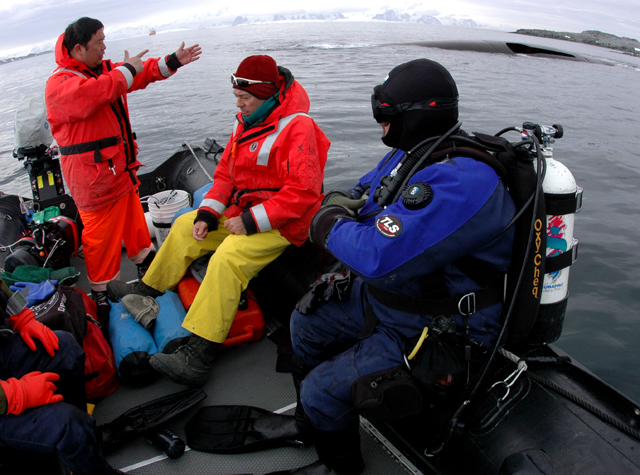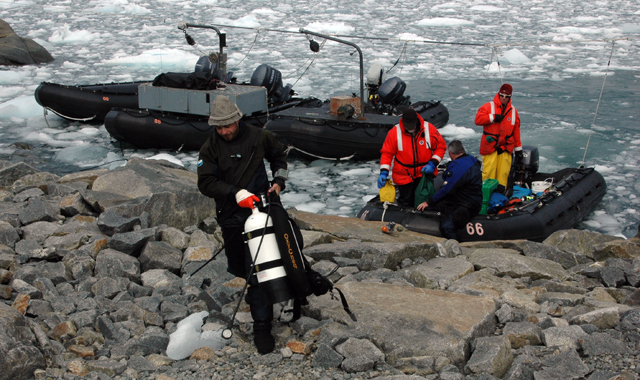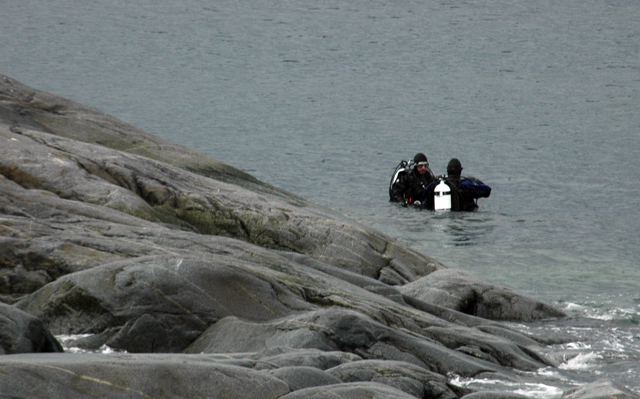About the journeyNorbert Wu returns to Antarctica for new film, outreach projectsPosted March 26, 2010
Norbert Wu A bulky orange float coat makes his short, stout figure appear even thicker. Wu doesn’t exactly sport a Jacques Cousteau physique, but the stature belies a near-legendary fearlessness that has helped propel him into the upper echelon of natural history photographers and filmmakers over the last 20 years. But Wu has no plans today to jump in the nearly freezing Antarctic waters, playground for Adélie penguins, humpback whales and stealthy leopard seals. He’s left that job to divers Ryan Caldwell and Martin Schuster, who are already zipped up in their dry suits, waiting to reach the morning’s dive site — a sunken Argentine Navy ship, the Bahia Paraiso, just a couple of kilometers from Palmer Station Their objective isn’t really the ship, which ran aground in 1989, but to test out a new technique for filming a krill swarm underwater. While Caldwell and Schuster are in the water, Wu and team member Andy Day will lower a high-definition video camera down on a rope. The divers are to check the camera to see how well it hangs in the water. It’s a bid to capture something unique — a school of shrimplike krill, a significant part of the food web here — in a place that has become increasingly well documented over the years. “I have not seen good video or stills [of krill swarms],” Wu says. “I’ve seen some grainy black and white video that The BBC did about 20 years ago. I don’t think it’s been done well before.” Wu should know. Few photographers or filmmakers have enjoyed the sort of access to Antarctica he has had over the last decade or so. The National Science Foundation (NSF) He made the most of the opportunity, creating the documentary, “Under Antarctic Ice,” He had enlisted his childhood friend Day — a biologist and photographer himself — during one season to assist with the filming. Somehow, they made it work. “He foolishly entrusted me with this $100,000 camera, putting it into the waterproof housing ever day,” Day recalls, as the Zodiac floats in the placid water while Schuster and Caldwell blow bubbles below. “I had no prior experience of such things. The training I got was suspect at best —but it never flooded.” Wu laughs at the memory, particularly the reaction of the Sony executives who lent him the two expensive cameras. “Those guys were so nervous about me bringing those cameras down. They were freaking out.” In addition to the movie, Wu produced a tabletop book with writer Jim Mastro, also called “Under Antarctic Ice,” “I think it’s still being used by a lot of researchers,” he says of the site maintained by former Antarctic dive team member Peter Brueggeman at Scripps Institution of Oceanography |



For USAP Participants |
For The Public |
For Researchers and EducatorsContact UsU.S. National Science FoundationOffice of Polar Programs Geosciences Directorate 2415 Eisenhower Avenue, Suite W7100 Alexandria, VA 22314 Sign up for the NSF Office of Polar Programs newsletter and events. Feedback Form |





